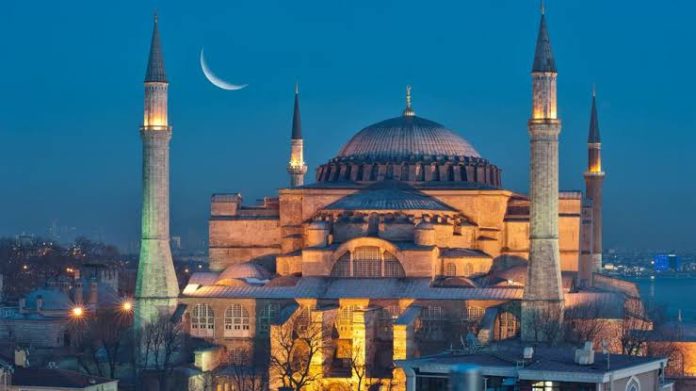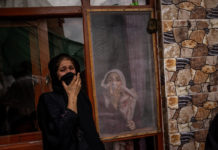After a gap of 85 years in its long history, the Hagia Sophia, an important Byzantine building and one of the world’s great historical heritages, has become a place of worship again. The weapon used in this recent change is the law, which was also used in 1934 when Kemal Ataturk turned it into a museum. Ataturk was the founder of modern Turkey.
Like today, this great building has been, and always has been, a manifestation of the changes taking place in the region of the world where East and West have been intermingled for the last two and a half thousand years. There have been wars in the past between several great empires over the defense of this important region.
Hagia Sophia has embraced Istanbul’s tumultuous history, despite the wounds of many wars and the good and testing times, it still stands its ground. If modern buildings often do not last more than several decades, how is it possible that this building has been in existence for 1500 years?

Early History
According to the Roman historian Tacitus, Hagia Sophia, the Church of the Holy Wisdom of Christ, was founded in the Byzantine city of Acropolis on the site of two earlier churches. The Roman emperor Constantine (337-272) changed the name of the city to Constantinople in the fourth century, and moved the capital of the Roman Empire to the city. Constantine wanted to make the city forget Rome.
Hagia Sophia was first opened by Constantine II, Constantine’s son, in 360, but was burned during the riots in 404. It was later rebuilt by Theodosius II in 405, but was burned again in the riots of 532. Some of the remains of that burnt building are in the garden of the present mosque.
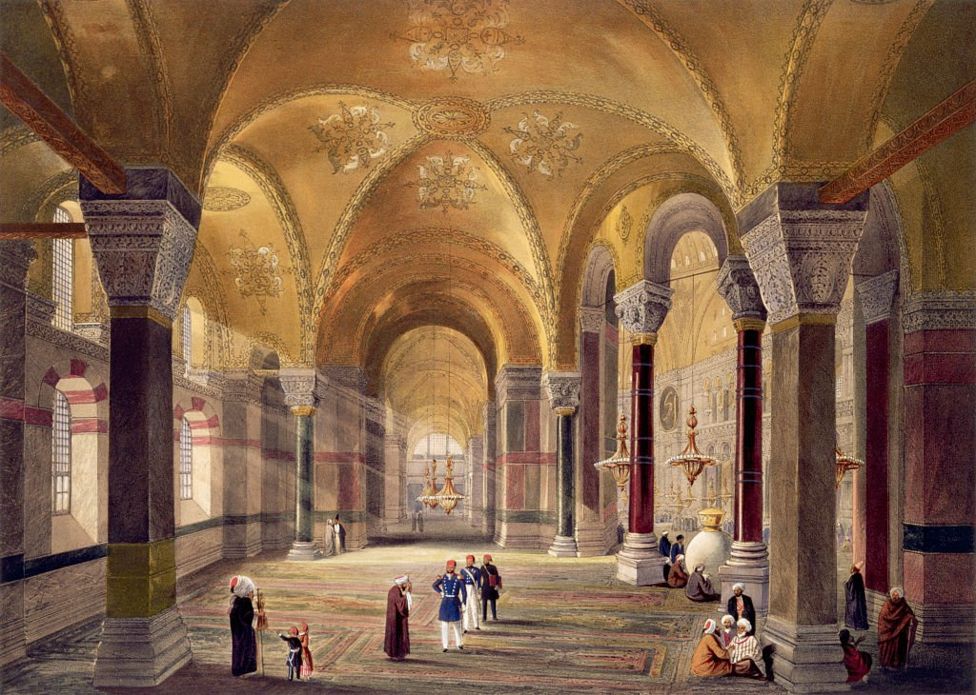
A few days after the riots, King Justinian decided to rebuild it, building the largest church in the world which remained the largest cathedral for hundreds of years. Justinian wanted to make the building more magnificent and superlative than ever, a cathedral that was a clear declaration and symbol of the power and resistance of the Roman Empire.
Justinian did not spare any effort for this, the construction material of this building was ordered from Africa, Asia and Europe. According to a legend, its doors were made of pieces of Noah’s ark. By doing so, Justinian wanted to become Solomon, who had built the first church in Jerusalem. It is said that when he first entered Hagia Sophia, he enthusiastically shouted, “I have defeated you, Solomon.”
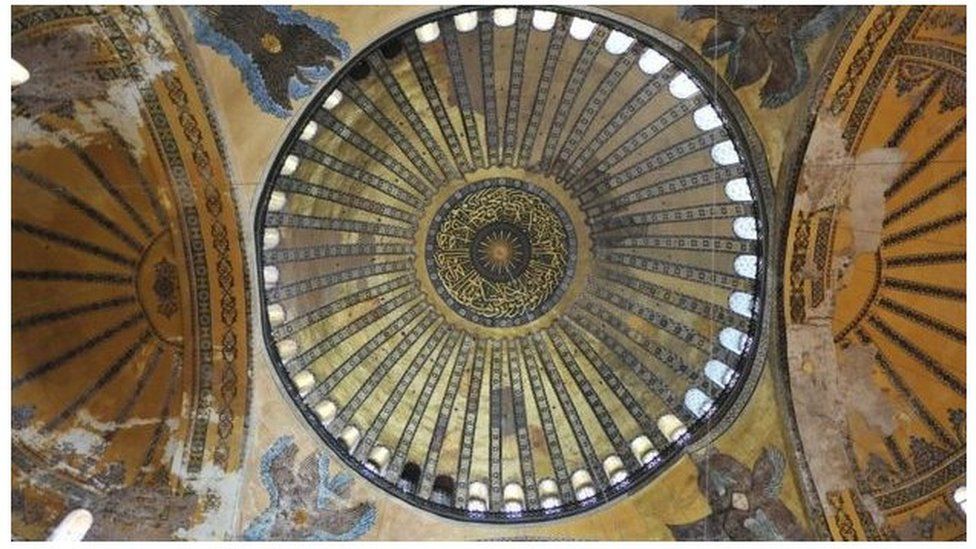
Justinian hired the best architects of the time to build the cathedral. These experts completed it in less than six years. It was a feat in the sense that medieval technology and craftsmen completed the Cathedral of Notre Dame in Paris in almost a century.
This mighty and glorious building of Hagia Sophia overwhelmed the city scene and its 33 meter diameter dome became the tallest dome in the world which was 55 meters high from the ground but 26 years later this dome collapsed in an earthquake.
The king immediately ordered that it be repaired. This time, among many other techniques, one technique used was to make 40 thin columns on the round beam of the dome to reduce the weight. Then they had to solve the mystery of how to make a round dome on a square base.
The solution was to add some triangular columns to the square base in places that are very important for lifting weights. These triangular columns shifted the weight of the circle under the dome to four points, which changed the whole structure from a circle to a square. In addition, very light and thin objects were used in the dome, so that when hundreds of candles were lit in it, the dome of St. Sophia could be seen shining from a distance at night.
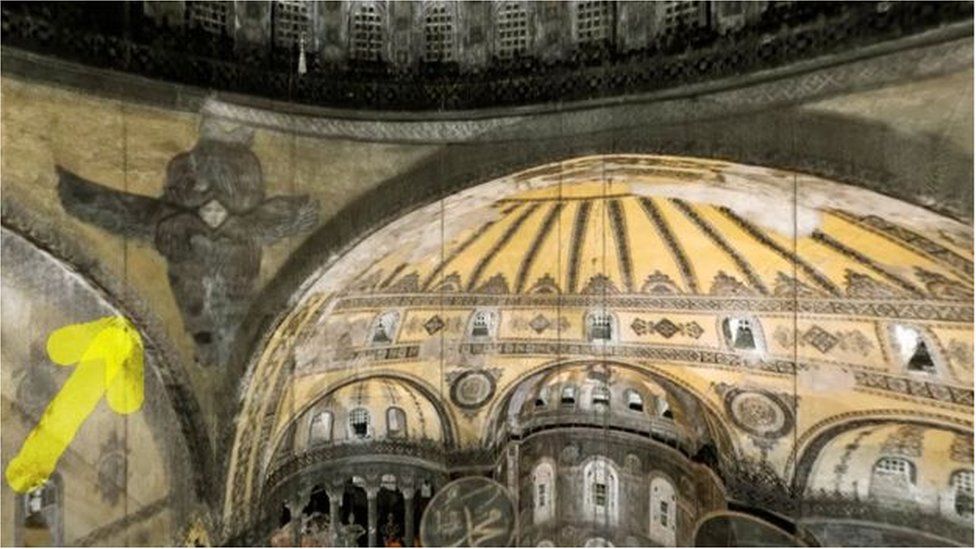
In her book, Visions of Heaven, Victoria Hammond writes that as the sun rises, sunlight comes in through the windows. Inside the building, light flashes, golden mosaics shine, it feels like there are no walls, and a mysterious atmosphere is created that is indescribable.
But the earthquake of 558 was not the only threat that Sophia had to deal with. There were other threats to his safety. Two large and half-domes were built alongside it to support the original dome. In addition, many embankments were built over the years to keep everything connected.
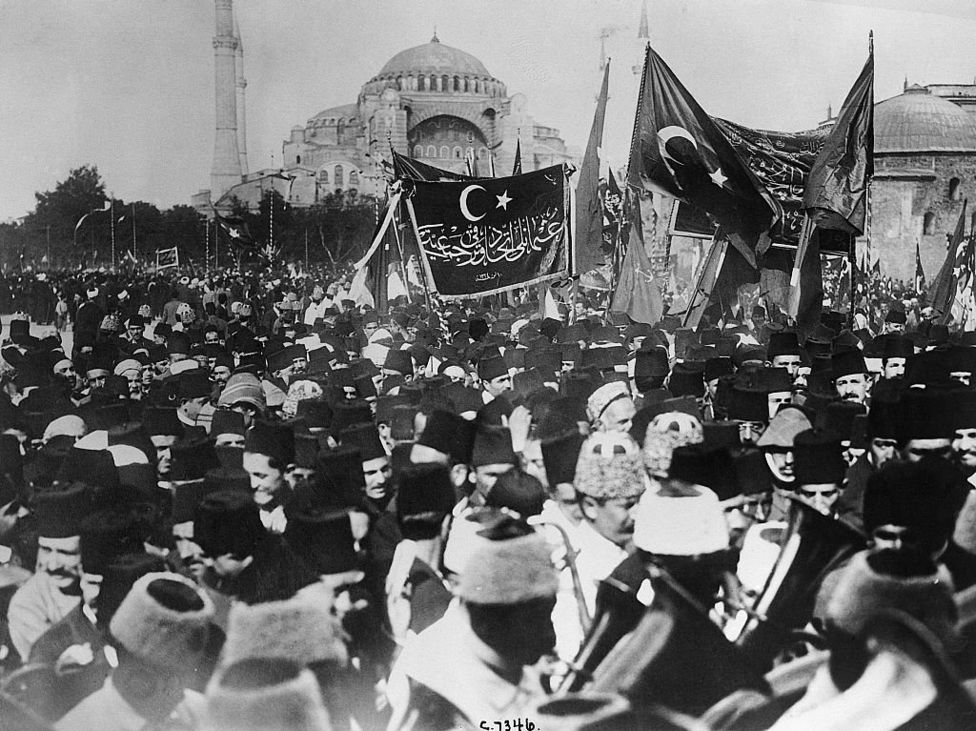
Different Types of Attacks
Buildings do not just have to deal with natural disasters such as earthquakes, weather and passing time. No matter how strong their foundations and structures are, they often fall prey to human passions and desires, especially wonders that become symbols like Hagia Sophia.
Constantinople was not only strategically important but also was one of the richest and most important cities in the world and Hagia Sophia was its spiritual center or heart. For centuries there have been religious conflicts between the Roman Catholic world and the Byzantine Empire. Eventually, Constantinople became a city for Western invaders that was hard to resist.
When European invaders invaded the city in 1204, war broke out between the Eastern and Western groups of Christianity. Some most important historical relics were lost in the war, including the stone of Jesus ‘tomb, the spear that was attached to Jesus’ body. The shroud of Jesus, which was the original cross, contained fragments of St. Thomas’s suspicious finger and several other St.’s bones.
Hagia Sophia remained a Catholic church for a short time, but the consequences of the invaders’ actions were far-reaching and profound, directly responsible for the destruction of Christianity in the East.
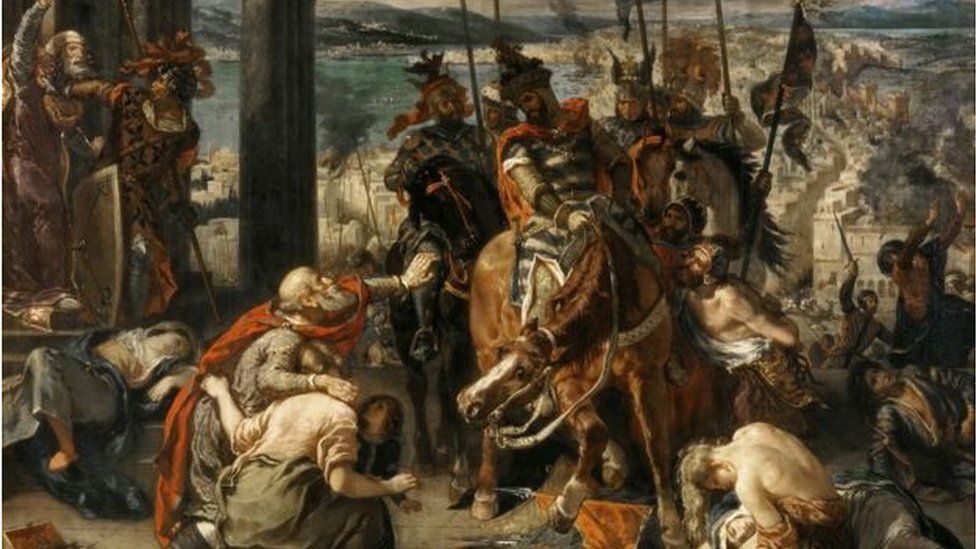
Place of Shelter
By 1452, the Byzantine or Eastern Roman Empire had shrunk to Constantinople, although the city’s defenses were strong, but it was a Christian island besieged by the Ottoman Empire of Muslim Turks.
Turkish leader Sultan Muhammed decided to destroy the city’s defenses, and on April 22, 1453, the Turkish army set out to lay siege to Constantinople. The 5,000 Byzantine army faced the 200,000 Ottoman army. Women, children, the elderly and the sick took refuge behind the great gates of Hagia Sophia. Mehmet or Muhammad Fateh bombed the city walls continuously for 53 days. He was commanding the most modern artillery of his time.
On May 29, 1453, the resilient and high walls of Constantinople finally broke down. The Western historical tradition states that the invading army entered the church and raped and killed and enslaved the Christians there, while the Eastern historical tradition contradicts this claim and states that the asylum seekers were forgiven.
While Sultan Muhammad himself grieved the destruction of the city, saying, “It is unfortunate that a magnificent city was looted and plundered.” And so the last remains of the Roman Empire, the Byzantine world, came to an end.
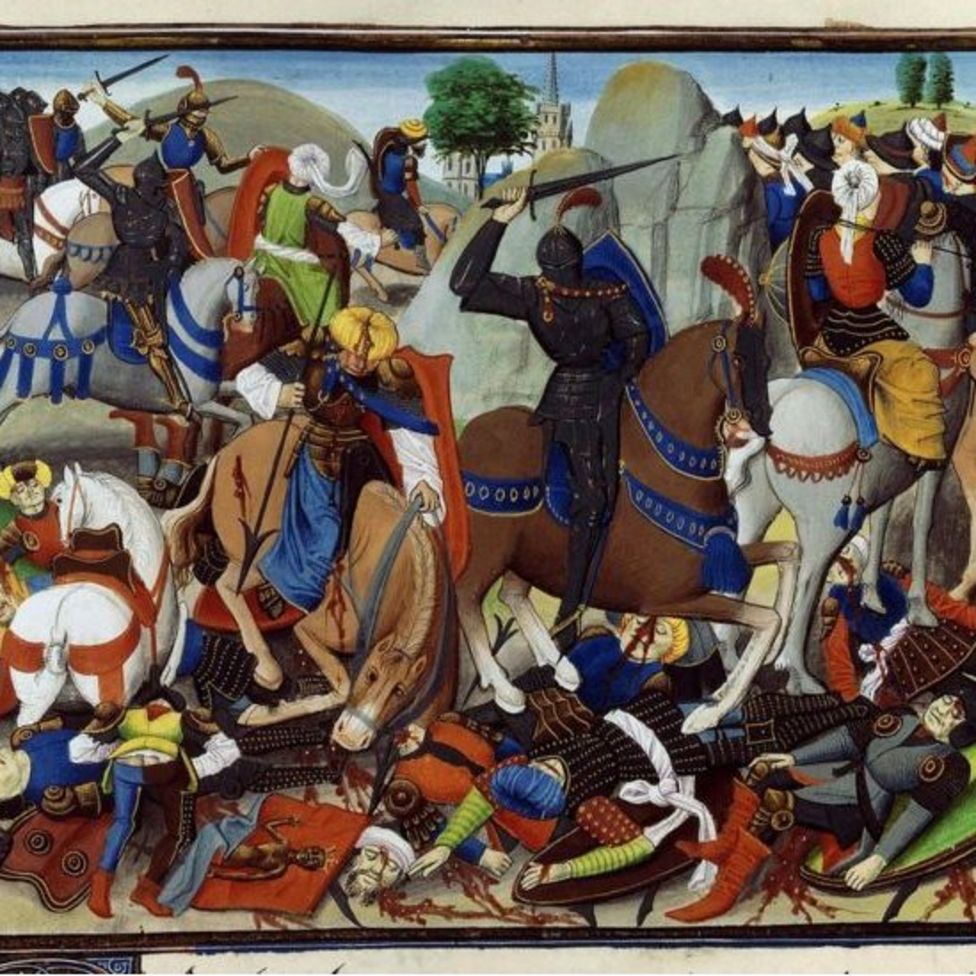
A New Chapter
For Constantinople, that was the beginning of a new chapter in history. The city was renamed Istanbul, a Muslim city and capital of Sultan Muhammad’s Ottoman Empire.
This time the only way to save the building was to change its architecture from that of Byzantine construction. The cathedral building became a mosque. Instead of a major overhaul of the building, few minarets were erected in each corner.
The names of Allah, the Prophet of Islam and his grandchildren were embossed inside the new mosque. Christian carvings were covered with plaster or Islamic ornaments, but the most important change was the construction of the Mihrab (A niche in the wall of a mosque, at the point nearest to Mecca, towards which the congregation faces to pray) so that Muslims could pray facing the Qiblah. (The direction of the Kaaba (the sacred building at Mecca), to which Muslims turn at prayer)
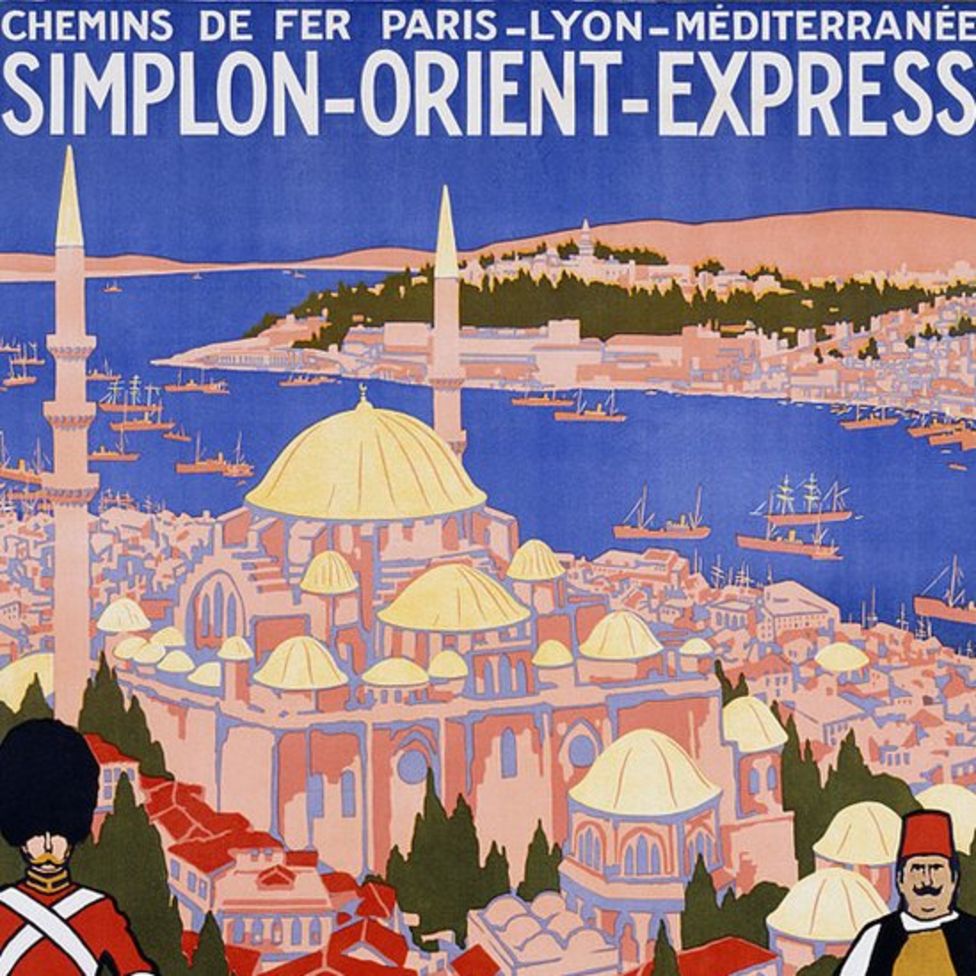
In the 20th century, the identity of Hagia Sophia changed once again and it was converted into a museum. Over time, Istanbul, which has been conquered, destroyed and rebuilt many times by both East and West, has become a city with a rich Asian and European influence, a city where many of the world’s cultures meet and evolve. The process is visible.
A church for 900 years, a mosque for 500 years, a museum for a very short time and the Hagia Sophia building, which once again is converted into a mosque, still stands there in full force and glory.
Also Read: Pope Pained Istanbul Museum reverts to Mosque


